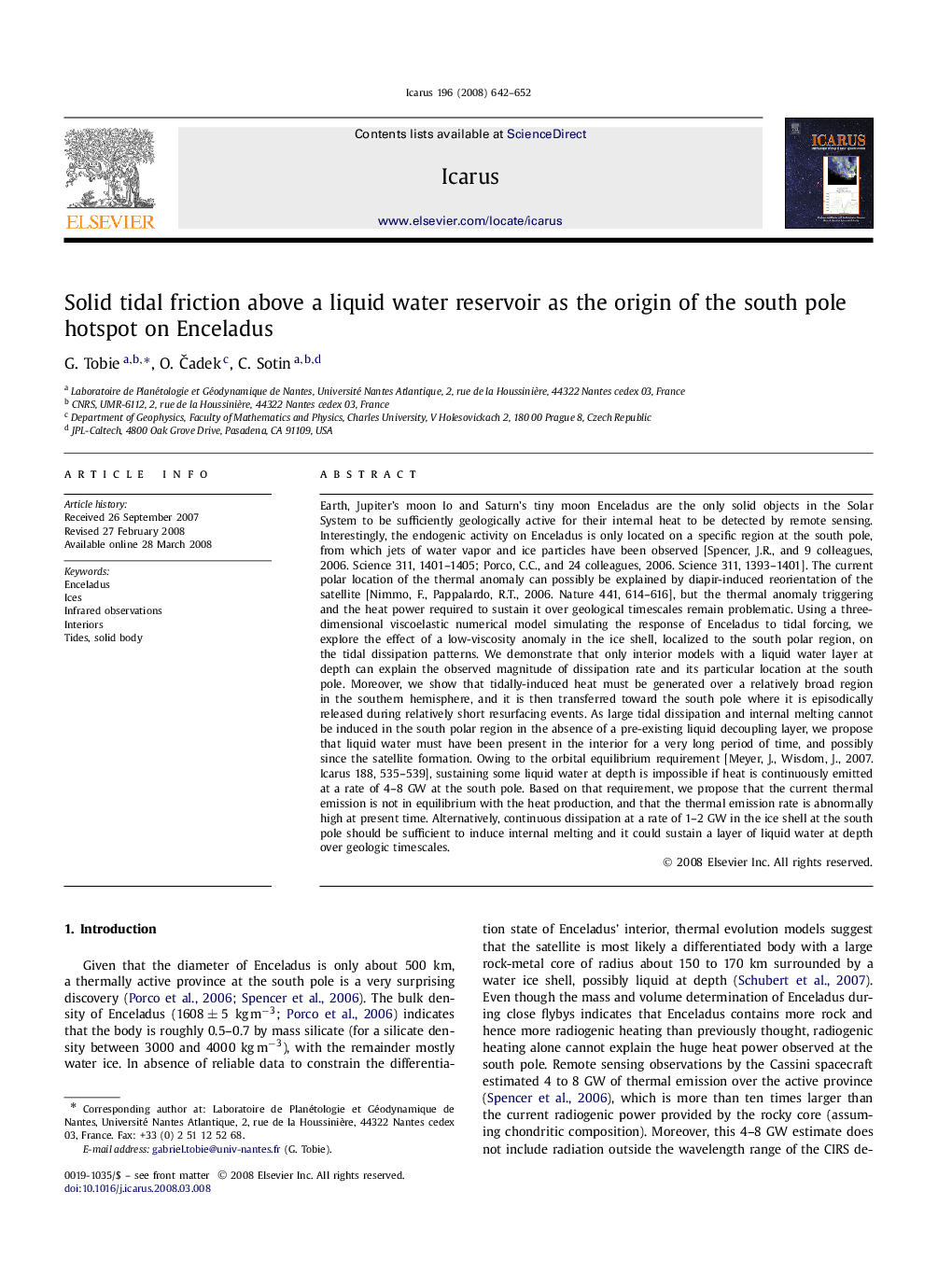| کد مقاله | کد نشریه | سال انتشار | مقاله انگلیسی | نسخه تمام متن |
|---|---|---|---|---|
| 1774876 | 1021177 | 2008 | 11 صفحه PDF | دانلود رایگان |

Earth, Jupiter's moon Io and Saturn's tiny moon Enceladus are the only solid objects in the Solar System to be sufficiently geologically active for their internal heat to be detected by remote sensing. Interestingly, the endogenic activity on Enceladus is only located on a specific region at the south pole, from which jets of water vapor and ice particles have been observed [Spencer, J.R., and 9 colleagues, 2006. Science 311, 1401–1405; Porco, C.C., and 24 colleagues, 2006. Science 311, 1393–1401]. The current polar location of the thermal anomaly can possibly be explained by diapir-induced reorientation of the satellite [Nimmo, F., Pappalardo, R.T., 2006. Nature 441, 614–616], but the thermal anomaly triggering and the heat power required to sustain it over geological timescales remain problematic. Using a three-dimensional viscoelastic numerical model simulating the response of Enceladus to tidal forcing, we explore the effect of a low-viscosity anomaly in the ice shell, localized to the south polar region, on the tidal dissipation patterns. We demonstrate that only interior models with a liquid water layer at depth can explain the observed magnitude of dissipation rate and its particular location at the south pole. Moreover, we show that tidally-induced heat must be generated over a relatively broad region in the southern hemisphere, and it is then transferred toward the south pole where it is episodically released during relatively short resurfacing events. As large tidal dissipation and internal melting cannot be induced in the south polar region in the absence of a pre-existing liquid decoupling layer, we propose that liquid water must have been present in the interior for a very long period of time, and possibly since the satellite formation. Owing to the orbital equilibrium requirement [Meyer, J., Wisdom, J., 2007. Icarus 188, 535–539], sustaining some liquid water at depth is impossible if heat is continuously emitted at a rate of 4–8 GW at the south pole. Based on that requirement, we propose that the current thermal emission is not in equilibrium with the heat production, and that the thermal emission rate is abnormally high at present time. Alternatively, continuous dissipation at a rate of 1–2 GW in the ice shell at the south pole should be sufficient to induce internal melting and it could sustain a layer of liquid water at depth over geologic timescales.
Journal: Icarus - Volume 196, Issue 2, August 2008, Pages 642–652